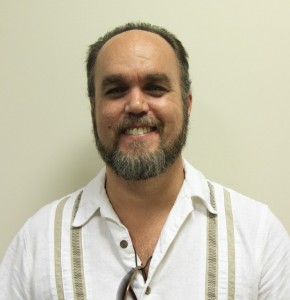 I saw a lot of violence during my years in prison in Georgia. Most of the time, however, this violence happened because of miscommunication.
I saw a lot of violence during my years in prison in Georgia. Most of the time, however, this violence happened because of miscommunication.
Rumors about what one guy had said about another, or allegations of some misconduct such as stealing, would lead to a confrontation. The accused would feel trapped into responding with violence. The culture was attuned to respect, and instances of disrespect were seen as reasonable grounds for hitting someone, or at least threatening them. Even when a man was disinclined to violence he would feel the pressure of his peers to go along with the norms. He would also be aware that by holding back some people would perceive him as weak, so being peaceful might actually lead to more violence.
Once, my towel was stolen. This was no ordinary towel, but of the “free world,” something that my mom had sent me. “Free world” goods had much greater value in prison, and I was outraged at my loss. One common strategy for dealing with theft was to pick someone who you thought might be a thief and attack them. This was seen to prove that you would stand up for yourself. I thought this idea was stupid. Randomly picking someone else to become a victim didn’t seem like a good way to stop thieves. I was determined to find out who had taken my towel.
Another consideration was status. I had been in a few years then, which I thought accorded me a certain amount of respect. I was determined to keep that respect, which I felt I had earned, even if it led to violence. I thought that I knew who the perpetrator was, so I confronted him. He denied it, and even worse he seemed sincere. This posed a dilemma for me. I was inclined to avoid violence, but by accusing him I had put myself at risk. Even though he wasn’t eager to fight either, I believed that to turn away would be a defeat for me.
I confronted him in a place where there were no guards, and where I had enough friends to keep a gang from attacking me. He turned out to be a better fighter than me, and I remember thinking as I tried to keep him from kneeing me in the face while watching my blood drip onto the ground, that there must be a better way to deal with things. Our fight ended, and we never had any other problems, but I never got my towel back either.
I did develop better strategies over the years, but I continued to see violence everywhere I went. I studied Gandhi’s approach to nonviolence, but it seemed hard to put into practice. I studied Buddhism and its ideas of not harming, but they didn’t seem to fit my needs all the time. Then, in 2004, I discovered Nonviolent Communication, an example of applied linguistics that has as its goal increasing empathy and self expression. It was created by Dr. Marshall Rosenberg, and has been used from inner city Chicago to Rwanda.
Rosenberg gives a simple, though not easy, procedure for engaging in any kind of communication. It involves observation of facts separated from opinion, awareness of emotions stimulated by events, awareness of what universal needs are not being met for us, and a request that aims to get our needs met. It always holds the needs of the other to be of equal importance, and teaches a kind of dialogue that fosters empathy and honest expression in a way that lets the other person see us as fellow human beings instead of opponents.
Practice of NVC, as it is known, increases self awareness. This leads to increased choice in how to reach our own goals. Increased empathy leads to a desire to contribute to others, not out of duty, but instead as a natural expression of who we are. NVC is essentially a method of cognitive reframing, literally allowing a practitioner to see the world in a new way. Some friends and I began to study it, and then to teach it to others in several settings. The responses were dramatic, with individuals reporting less stress, better relationships, and more happiness in their lives. Most important to me was a decrease in their aggression and violence.
I recall one man’s change in particular. He had been in for about 10 years and was often involved in verbal and physical conflict. After a few weeks of class, he came up to me and related an argument he had gotten into. Excitedly he told me, “I didn’t hit him!” This was a huge breakthrough for him. He had been able to see the humanity of the other, and had been motivated to help him instead of harm him.
I am convinced that teaching these skills to kids, including those who are incarcerated can decrease the occurrence of crime, especially violent crime. Preferably NVC, or some similar method, would be taught in schools before kids ended up in trouble. What is needed are people interested enough to learn the skills themselves, then willing to share them with kids, teachers, parents, institutional staff, and anyone else who is in contact with young people.
